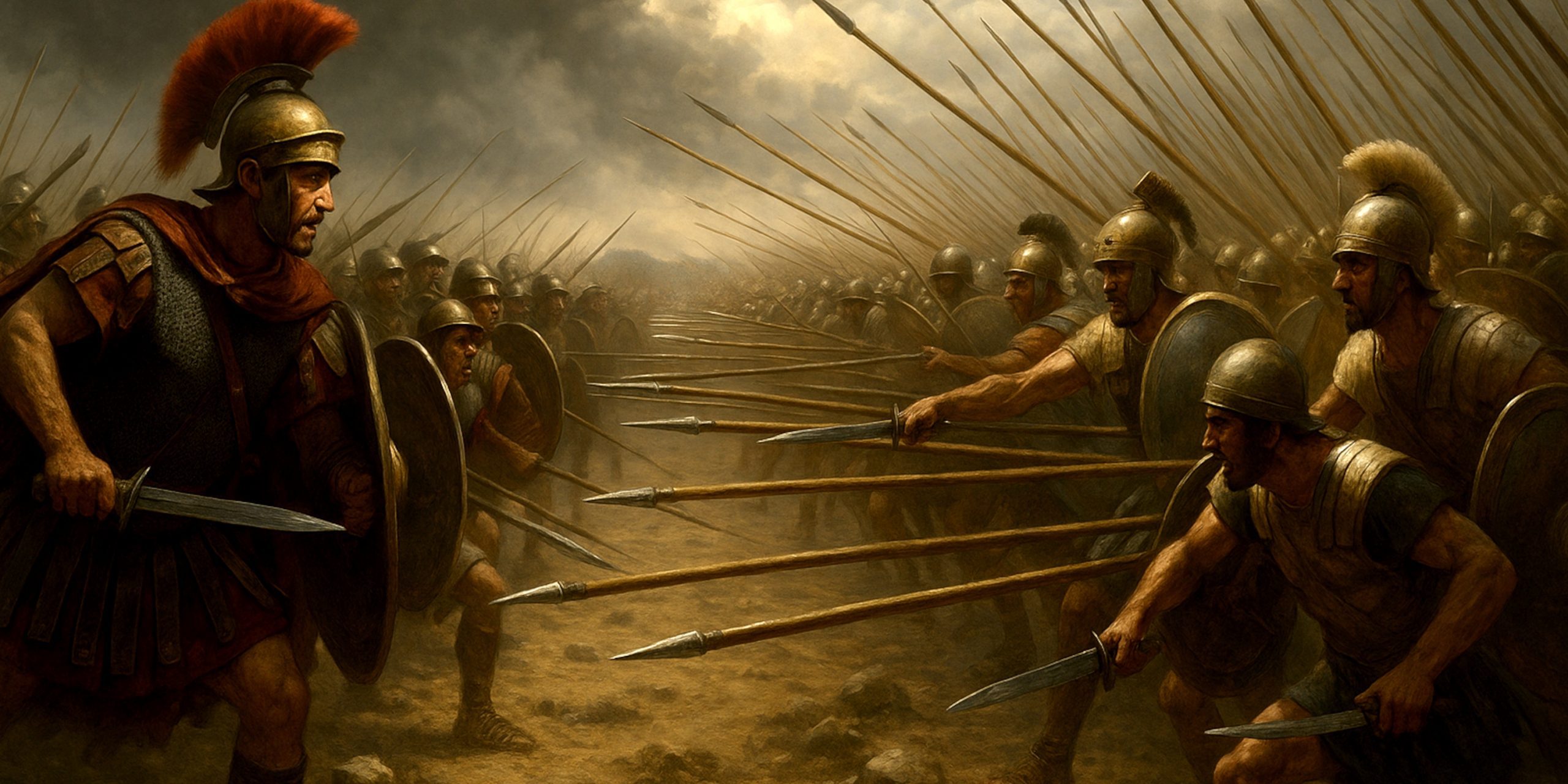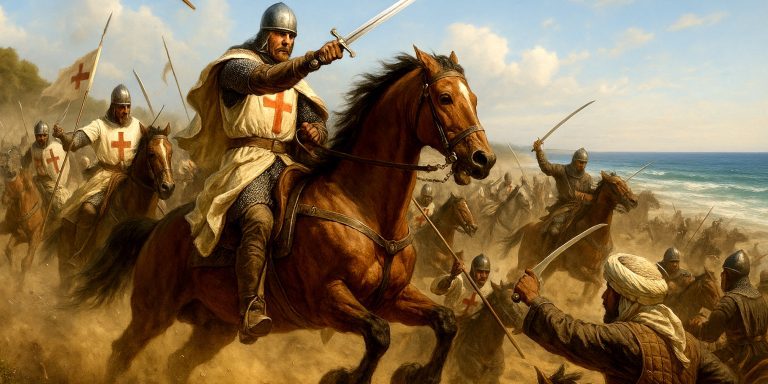
The Battle of Pydna, fought on 22 June 168 BC, marked the decisive end of the Third Macedonian War between the Roman Republic and the Kingdom of Macedon. This clash not only brought the Antigonid dynasty to its downfall but also cemented Rome’s influence over Greece.
Background
King Perseus of Macedon had rebuilt Macedonian prestige, strengthening its army and forming alliances in Greece. Rome, wary of his growing power, intervened, leading to a campaign that culminated at Pydna in northern Greece. The encounter would become a textbook case of tactical mismatch between the Macedonian phalanx and the Roman legion.
Forces
Roman Republic
- Commander: Lucius Aemilius Paullus
- Troops: Around 29,000
- 24,000 legionaries
- 3,000 cavalry
- 2,000 allied light infantry
Macedon
- Commander: King Perseus
- Troops: Around 43,000
- 21,000 phalangites
- 12,000 mercenaries and allied infantry
- 4,000 cavalry
- 6,000 light troops
| Side | Commander | Infantry | Cavalry | Other Forces |
|---|---|---|---|---|
| Rome | L. Aemilius Paullus | 24,000 | 3,000 | 2,000 light infantry |
| Macedon | Perseus | 33,000+ | 4,000 | 6,000 auxiliaries/mercs |
Leaders and Troop Composition
- Lucius Aemilius Paullus: A seasoned Roman consul, known for his discipline and strategic patience.
- Perseus of Macedon: Last king of the Antigonid dynasty, courageous yet indecisive at critical moments.
Roman units were formed into maniples, offering flexibility and manoeuvrability. Macedonian forces relied on the phalanx, a wall of sarissas (long pikes), supported by cavalry and mercenary contingents.
Arms and Armour
Roman
- Primary weapons: Gladius Hispaniensis (short stabbing sword), pilum (heavy javelin)
- Defensive gear: Large rectangular scutum, bronze helmet, chainmail (lorica hamata)
- Tactics: Heavy reliance on flexibility, breaking enemy formations with pila before closing with the gladius.
Macedonian
- Primary weapons: Sarissa (5–7 metre pike), xiphos or kopis (short sword for close combat)
- Defensive gear: Round aspis shield, linothorax or bronze cuirass, crested helmet
- Tactics: The phalanx relied on cohesion and flat ground, presenting an almost impenetrable hedge of pikes.
The Battle
At first, the Macedonian phalanx advanced effectively, pushing back Roman lines. However, the uneven ground near the River Leucus disrupted its cohesion. Gaps appeared in the dense formation. Paullus seized the moment, ordering his maniples to exploit these openings. Roman legionaries slipped between the sarissas and engaged at close range, where the gladius outmatched the unwieldy pike. The phalanx collapsed under relentless assaults, and the Macedonian army disintegrated.
Casualties were lopsided: estimates suggest up to 20,000 Macedonians killed against fewer than 1,000 Romans.
Archaeology
The battlefield has been linked to sites near modern Pydna in Pieria. Excavations have uncovered fragments of weaponry, including spearheads, swords, and arrow tips, although much has been lost to time. Roman sources such as Plutarch and Livy provide detailed descriptions, helping historians piece together the encounter.
Battle Timeline
- Morning: Both armies arrayed near Pydna, with the Macedonian phalanx forming in depth.
- Midday: Initial advance of Macedonian lines pushed back Roman front.
- Afternoon: Terrain disrupted phalanx, creating gaps.
- Late battle: Romans exploited openings, cutting into the phalanx.
- Aftermath: Macedonian rout, King Perseus fled, captured shortly after.
Contemporary Quotes
Plutarch, in his Life of Aemilius Paullus, describes the moment the phalanx was broken:
“For when the phalanx had been disordered by the inequality of the ground, and gaps were made, and the sarissas broken, then the Romans pressed in, and fought with their swords at close quarters.”
Livy highlights the slaughter:
“Never was there a more destructive battle to the Macedonians than this. Twenty thousand were slain, eleven thousand captured, and the king himself fled.”
Seven Swords Takeaway
The battle ended Macedonian independence. Perseus was taken prisoner, and his kingdom was divided into Roman protectorates. Pydna demonstrated the superiority of the Roman legion over the Hellenistic phalanx, a lesson not lost on subsequent generations. It also marked a turning point in Rome’s domination of the eastern Mediterranean.
Watch the documentary:



